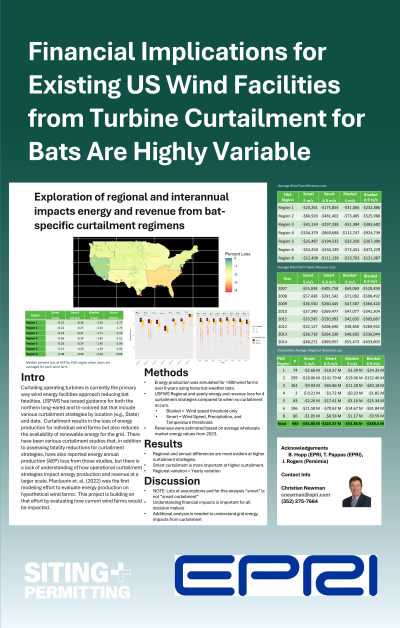Financial Implications of Existing US Wind Facilities from Turbine Curtailment for Bats


Christian Newman, MS, MBA (he/him/his)
Technical Executive
EPRI
Palo Alto, California
Poster Presenter(s)
Wind energy is responsible for hundreds of thousands of bat deaths annually from collisions with wind turbines. To minimize bat deaths, many wind facilities use turbine curtailment during periods of expected bat activity–mainly at night during the summer and early fall when wind speeds are low. Turbine curtailment effectively reduces bat deaths. This study simulated wind energy production at existing wind facilities across the contiguous United States (US) under varying curtailment scenarios. We evaluated annual energy production (AEP) under varying scenarios and analyzed the impact financially of each wind facility. We found a national median 0.12% to 1.91% AEP loss with our low and high curtailment scenarios from curtailment across the US. For many wind facilities, this AEP loss could affect their financial viability, as under high scenarios, curtailment resulted in a negative net present value (NPV) for over 13% of wind facilities. The study also analyzed the regional differences. Our findings suggest that curtailment with low cut-in speeds may not alter AEP significantly, but more stringent curtailment could negatively affect wind facility financials. Future directions for this research may focus on other financial metrics for the viability of wind facilities. They could examine AEP loss from different smart curtailment technologies to better understand how wind facilities can pursue cost-effective curtailment to reduce bat fatalities.
